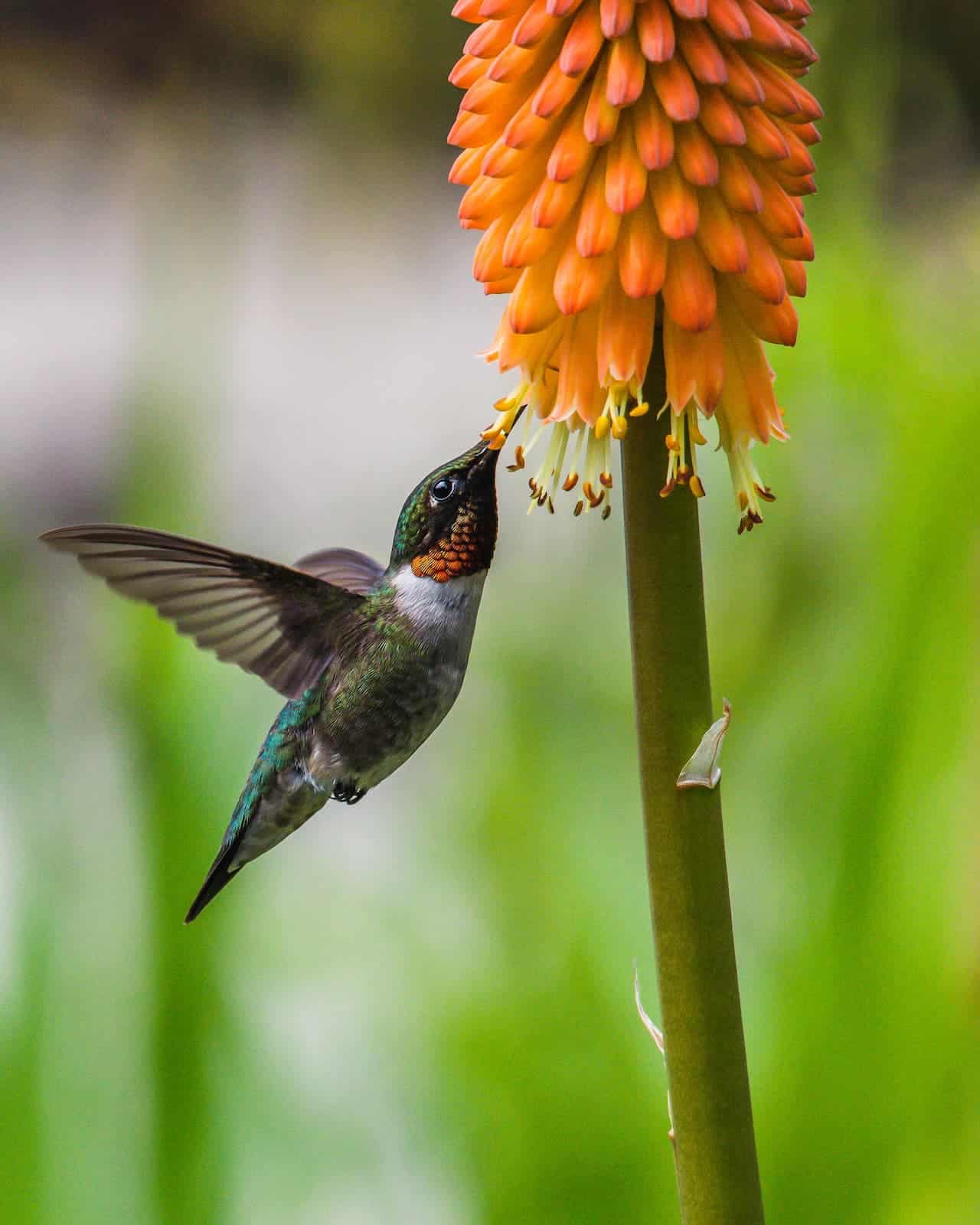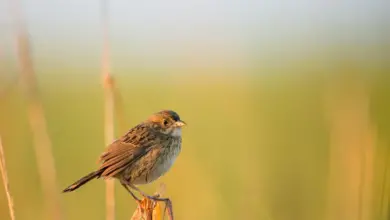Can Peacocks Swim? Are They Waterproof?
Yes, peacocks can swim, but this doesn’t mean they want to nor is it safe for them to do so.
In fact it’s down right dangerous for peacocks to swim!
If you check out Youtube.com, you can find videos of peacocks swimming in rivers and lakes and not drowning.
They may not look as graceful as a swan swimming in a still pond, but since they don’t have webbed feet like other waterfowl, they still do pretty well when they must.
And it is usually a “must” situation. Normally, peacocks just don’t swim. They haven’t evolved to swim like water fowl have.
They also have the wrong feathers. And it has nothing to do with the long train of brightly colored feathers that makes them so popular, none of their feathers are actually waterproof.
Why Don’t Peacocks Swim More Often?
Peacocks don’t swim “for fun” simply because their feathers do not repel water the way birds like ducks and geese feathers do.
If you place water on a peacock feather, it will absorb the water, not repel it in the same way it is for other types of birds.
Waterfowl feathers have evolved to become waterproof, peacock feathers evolved to become water resistant.
This was a natural anatomical adaptation that took a lot of time. And since waterfowl spend most of their time on the water, unlike a peacock who spends all its time on land, the two birds and their feathers have evolved in different ways.
What Are the Types of Feathers?
All birds have basically two types of feathers, contour feathers that give the bird it’s overall size and shape, and down feathers, the feathers that keep birds warm and assist with thermoregulation.
Every bird feather also has a rachis and a vane. The rachis is the hollow shaft in the middle of the feather. This is also he part that an old feather quill pen would use to write with.
The vane is the culmination of all of the other parts of the feather you see. So the parts you’d peel off the quill if you just wanted the rachis, or the “quill” part of an old pen, what’s left in your hand is the vane.
The vane is further broken down to classify the different parts of its components including the branches or barbs, barbules and possibly barbibcles.
Yes, there’s a lot more to a feather than just being a pretty object.
The Parts of a Feather
In total, a typical feather consists of 2 different parts, or classifications, the vane and rachis or barb.
Overall there are five main classifications that are easy to see called the vane, shaft, barbs, aftershaft and quill.
The vane can be broken down into the branches of a feather. If you look at a feather very closely, you’ll see each “strand” of the feather connects. These can be taken apart, or peeled off from one another.
Each of these thin long parts are called a branch or barb.
The barbs stay connected to each other using barbicels that possess hooks called hamuli or barbibcles. Think of these hamili like tiny Velcro or parts of a zipper. They are what holds the tiny strands of feather together so the feather can keep its shape.
It’s the density of these barbicels and how they knit together that decides whether they can repel water and how much air they can trap. The scientific name for this is pennaceous barbule density.
Pennaceous barbule density refers to the number of barbules a feather has which in turn determines how tightly knit together the strands of the feather (branches or barbs) are. The tighter knit, the more waterproof the feather is.
But tightly knit feathers aren’t the only reason feathers become waterproof.
The Importance of Preen Oil
Even though the micro-structures and how they bind are a major factor in determining the water resistance of a feather, there’s one last layer that really completes the waterproofing.
All waterfowl spend a lot of time preening themselves. The preening process is a way for all birds to keep their feathers in shape and rid themselves of any parasites.
But the other reason all birds preen themselves is to add a layer of oil to their feathers to keep them water resistant so they can fly and live as comfortably as possible in rain and storms.
This water resistance in land birds becomes waterproofing in aquatic birds in combination of preen oil added to their specific feather structure make up.
And since waterfowl need to be waterproof and not just resistant, waterfowl have larger preen glands that create more preen oil than land birds do. And they preen more often.
While peacocks have a preen gland like all birds, it is not large enough nor are their feathers tightly packed enough to create a waterproof environment.
Why Peacocks Should NOT Swim!
Peacocks shouldn’t swim because they do not possess the anatomical adaptations that waterfowl have. Simply put, their feathers are not waterproof. Only water “resistant”.
And this is the same for most birds that spend their time on land.
A study done in 2016 demonstrated a how bird’s feather evolution is decided on its environment. Birds that spend all of their time on land only need to repel water enough to keep dry. But they are not waterproof, only water resistant.

In fact, in a previous article we demonstrated how smaller birds that do succumb to drenching in cold weather will often die. This happens because their feathers can only keep water off them for a limited amount of time.
Whereas birds that spend all of their time in the water have evolved with tight knit feathers that not only keep them waterproof, but also add pockets of air allowing them to swim in the coldest water while staying toasty warm.
This downy layer of trapped air also works as a flotation device. And although peacocks also have down feathers, they are not the same dense feathers aquatic birds poses.
In a similar study scientists observed two populations of the same duck species in Peru and compared their down feathers. The ducks that lived in higher altitudes in (colder climate) compared to the other ducks in lower altitudes (warmer climate) had very different down feathers.
Both ducks had waterproof down, but since the higher altitude ducks lived in much colder climate, their down was more tightly knit than the other low altitude ducks further supporting that feathers evolve due to habitat or where the bird lives.
Is It Dangerous for Peacocks to Swim?
Yes, it’s very dangerous for a peacock to take a dip. Especially in a lake or deep pool of water.
In fact, when a peacock has it’s long tail feathers during mating season, he is at the worst possible position to swim.
This is due to their luxurious tail feathers being made up of semiplume feathers which are practically the worst feather to have if you’re in the water.
Semiplume feathers posses rachis and side barbs with smooth barbules which means they are very loosely connected to each other. The exact opposite of what we have learned in order for a feather to have waterproofing qualities.
Water can easily become trapped in these types of feathers weighing down any land bird enough to drown or have serious problems getting to safety.
Since a peacock’s train can already weigh half a pound or more to start with, once it is water logged this could easily weigh a few pounds, enough to easily drown most birds.
In Closing
Peacocks are land birds, they do not have an evolutionary reason to swim. This doesn’t mean they can’t, it means they shouldn’t.
Birds living in aquatic environments are biologically adapted to grow waterproof feathers due to evolutionary forces that have not been shared with peacocks.
So peafowl can swim, but their feathers where never designed to be waterproof.
This means the feathers will absorb water and sooner or later the bird will most likely drown if it can’t reach safety soon enough.




